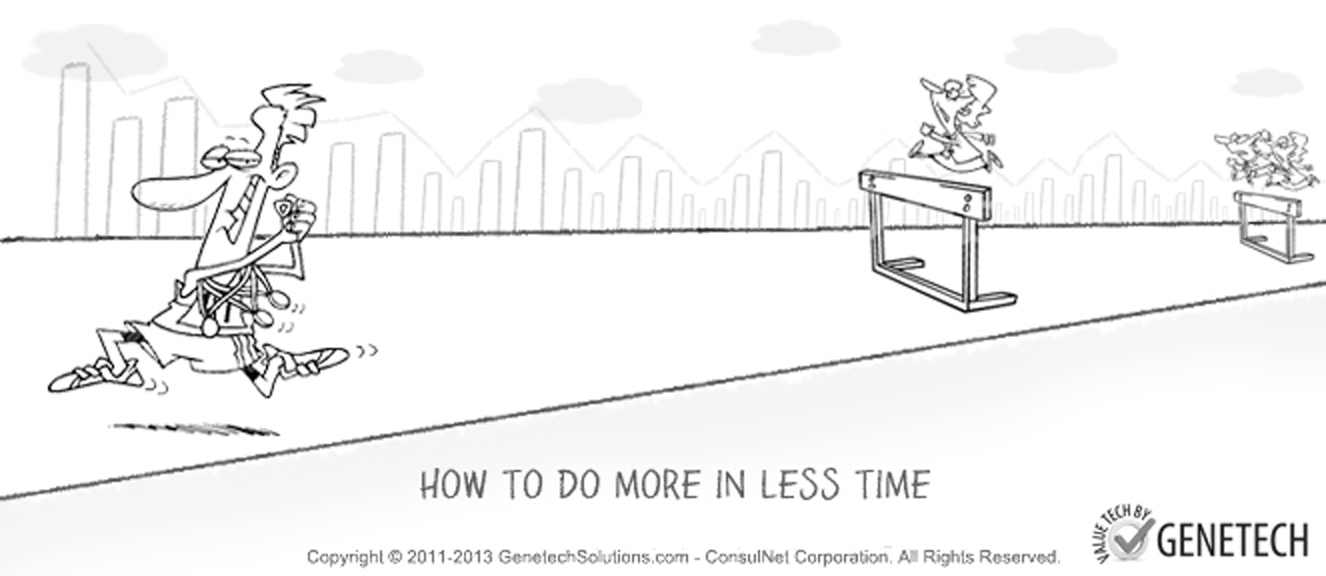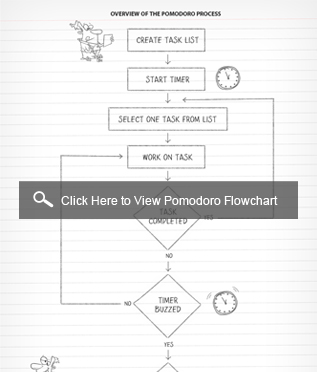
We’ve all had that feeling. You’re working hard, and you’re working all day, but somehow you don’t get as much done as you set out to do. Somehow tasks that shouldn’t take more than an hour take three. Routine, trivial tasks eat up more time than they should. At the end of the day, all you can think about is how much work you’ve left for tomorrow. It seems impossible to do more. How can you get more done when you’re already spending the whole day working?
Simple. Just spend less time on each task. Now how do you do that? The Pomodoro Technique.
You may be feeling a little skeptical, now. I’m working as hard as I can. How could some complicated, new technique possibly help me? Well, the Pomodoro Technique isn’t complicated at all (its pretty old, too). At the heart of the technique lies a timer set at 25 minutes. For those 25 minutes, you work a single task, ignoring any distractions. What is key here is to work on that one task only. During those 25 minutes, consider anything other than the task at hand a distraction, even other work. After those 25 minutes, reward yourself with a 5 minute break. Each one of these 30 minute segments is called a pomodoro. After about four pomodoros, which should mean 100 minutes of work, take a longer 15 to 20 minute break.
That, though, is only the very core of the technique. After a few days, this part of the Technique should start feeling like second nature. That is when you should start working on your Pomodoro objectives. There are six of these. You should work on them one at a time. Master the first objective, and then start working on the other ones.
You should start off by learning how much efforts tasks take. Everyday, write down how many pomodoros you spent on each task. Keep your records organized, and be honest with yourself. The best way to do this is probably to put a tick next to each task on your to do list after each pomodoro spent on the task.
You need to protect your pomodoros from interruptions, both internal and external. An internal interruption might be the sudden urge to call someone, or to look up something on the internet. If such and interruption arises, ask yourself if it can’t wait until the end of the Pomodoro. In almost all cases it can. Simply jot down what you want to do, and get back to the task at hand. Once the Pomodoro is done, go back and see what came up. External interruptions are trickier, however. Phone calls, urgent emails or a colleague dropping by to ask a question can all interrupt your work. Again, though, ask yourself if it can’t wait. Rarely will there be a case where it can’t. Just ask that person to give you the 25 minutes (or less, probably) that you need to finish your pomodoro.
The third objective is to learn how to estimate how much effort a certain task will really take you. You should do this by first monitoring how many pomodoros a task that you do often takes. Based on how much time those tasks take, start estimating how many pomodoros less routine tasks take. If your estimates are far from how long tasks actually take, try and think of why that may be. Perhaps certain types of tasks take more time than others for you. That’s okay. Just keep that in mind when estimating how long new tasks take. Once you’re confident that you can accurately estimate how long tasks will take, even for unfamiliar tasks, move on to the next objective.
At this point, you’ve spent quite a few days working with the Pomodoro technique. This is when you may want to start restructuring your pomodoros. This doesn’t mean making them shorter or longer. This means structuring your work within the 25 minute work segment. For example, if you’re writing, you may want to spend the last five minutes of the pomodoro revising what you’ve written. You can structure your pomodoros in other ways, too. It all depends on you and your task.
This is when you want to start setting a timetable based on Pomodoro segments. For example, you may decide you will have two four-pomodoro sets in the morning, and then three in the afternoon. Or the other way around. Perhaps you will have a set in the evening. Once again, it all depends on you. The important thing here is to keep your timetable realistic, and, once it is set, stick to it. If you can’t keep to your timetable on a day, find out why you couldn’t. Keep that in mind when setting the next day’s timetable.
The last objective is your objective. You decide what it is. You may want to be more efficient in your work, or to improve the quality of your work. Perhaps you want to free up more time for yourself. The objective can be whatever you want. This is where you use the technique to change the way you work in the exact way you want it to.
Hopefully, you’ll be able to use this technique to help save yourself plenty of time while working. This technique has been used by people all over the globe, yielding amazing results. Sticking to this technique can do the same for you. You’ll really be able to do more in less time.



